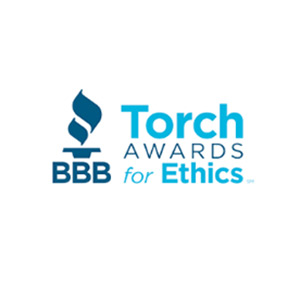 Step 1: Applying and Preliminary Clearance
Step 1: Applying and Preliminary Clearance
To participate in the 2014 OVDP Program, taxpayer’s are advised to first obtain a “pre-clearance” from the IRS Criminal Investigation (CI) Division. To do this, a taxpayer or his representative should fax the taxpayers’ name, date of birth, social security number, and address to the IRS Criminal Investigation Lead Development Center at (267) 941-1115. Note: Taxpayer should not enter the 2014 OVDP program without first obtaining the advice of experienced criminal tax defense counsel. The preparer that prepared the original returns should NEVER be consulted on this issue as they do not have attorney client privilege and thus can be forced to testify against you…
If the pre-clearance request is sent by a representative, an executed Power of Attorney (Form 2848) must be faxed with the information. After it has determined whether a taxpayer is eligible to make a voluntary disclosure, CI will notify the taxpayer or the representative, via fax, whether the taxpayer is cleared to make a voluntary disclosure using the Offshore Voluntary Disclosures Letter.
Comment: In our opinion this submitting a pre-clearance is a “one-way trip”: Once you supply your information to obtain a pre-clearance you are committed to the terms of the OVDP or you exponentially increase your risk of criminal prosecution. This program should not be entered into without an experienced criminal tax attorney’s counsel.
If the taxpayer or his representative chooses to bypass the pre-clearance process, the Offshore Voluntary Disclosures Letter is to be mailed to the following address:
Internal Revenue Service
ATTN: Voluntary Disclosure Coordinator
1-D04-100
2970 Market Street
Philadelphia, PA 19104
Note: Bypassing the preclearance process is not advisable because the initial intake letter is as good as a signed confession. This should only be done with the advice of counsel where circumstances indicate that time is of the essence and no time exists to wait for the precheck to be processed.
Step 2: The Voluntary Disclosure Package
Once the voluntary disclosure has been preliminarily accepted, the next step-is for the Taxpayer or his representative to send a full voluntary disclosure package no later 90 days receiving preliminary acceptance to the 2014 OVDP:
The voluntary disclosure submission must be sent in two separate parts:
(1) Checks are to be cut that are made out to the U.S. Treasury for the full amount of tax, interest and penalties owed. A separate check should be submitted for each tax year for which amounts are owed for the 20% accuracy-related penalty under IRC § 6662(a), and, if applicable, the failure to file and failure to pay penalties under IRC § 6651(a) plus interest back to the original filing date of the return. The memo line of the check should include the taxpayer’s tax identification number, the taxable year and the type of tax, i.e., “Form 1040″ for individual income tax.
A taxpayer who cannot pay the total amount of tax, interest, and penalties due can submit a proposed payment arrangement and a completed Collection Information statement (Form 433-A in the case of a wage earner or self-employed individual and form 433-B in the case of a business). If the taxpayer establishes to the satisfaction of the IRS that he cannot presently pay the full amount owed, he can work out other payment arrangements.
Send letters containing the taxpayer’s identifying information and all checks in a single envelope to:
Internal Revenue Service
3651 S. I H 35
Stop 1919 AUSC
Austin, TX 78741
ATTN: Offshore Voluntary Disclosure
Comment: If it is impossible due to circumstances beyond a taxpayer’s control to get the package in within the 90-day period such as where a foreign bank is not cooperating, an extension of time can be obtained by written request. A taxpayer requesting an extension must submit his name, address, date of birth, and social security number and should submit as much of the information as possible that will be required with the Voluntary Disclosure Package, including at a minimum the properly completed and signed agreements to extend the of time to assess tax (including tax penalties) request for up to a 90 day extension, including a statement of those items that are missing, the reasons why they are not included and the steps taken to secure them. Requests for extensions must be sent to the above Austin address before the date specified in the letter from the Criminal Investigation for completing the Voluntary Disclosure has expired.
(2) All participants in the 2014 OVDP are required to submit the following for the 2005-2012 (or 2006 – 2013 tax years if 2013 was non-compliant as to foreign income) to:
Internal Revenue Service
3651 S. I H 35
Stop 4301 AUSC
Austin, TX 78741
ATTN: Offshore Voluntary Disclosure Program
1. Copies of previously filed (and if applicable, previously filed amended) federal income tax returns for the eight (8) tax years included in the voluntary disclosure (2005 – 2012) or (2006 – 2013).
2. Up to eight (8) years of complete and accurate amended federal income tax returns (or original returns if delinquent or no amendment was necessary to report the foreign activity) that accurately report the previously omitted foreign activity (2005 – 2012) or (2006 – 2013).
3. A copy of the completed and signed Offshore Voluntary Disclosures Letter. The Offshore Voluntary Disclosures Letter is available online at:
4. Where required, a completed Foreign Account or Asset Statement, which is available online at Foreign Account.
Required for applicants disclosing offshore financial accounts with an aggregate highest account balance in any year of $1 million or more. A separate statement is required for each foreign financial institution where funds are disclosed.
A separate statement is required for each foreign account or asset included in the voluntary disclosure (the Foreign Account statement above replaces this form where aggregate highest account balance in any year is $1 million or more).
5. A completed penalty computation worksheet, which is available online.
This worksheet documents the taxpayer’s determination of the aggregate highest account balance of his/her undisclosed offshore accounts, fair market value of foreign assets, and penalty computation. The worksheet is to be signed by the taxpayer and the taxpayer’s representative if the taxpayer is represented.
6. Properly completed and signed agreements to extend the period of time to assess tax (including tax penalties) and to assess FBAR penalties. Consents are available online.
Instructions for completing the consents are available online.
7. Complete and accurate FinCen 114 (formerly Form TD F 90.22-1), Report of Foreign Bank and Financial Accounts (FBAR), for foreign accounts maintained during calendar years covered by the voluntary disclosure (2005 – 2013) and/or copies of previously filed FBARs. The current FBAR Form should be used for all years for which the form is due. Taxpayers of their representatives with questions about the FBAR Form can call the FBAR Hotline at (313)-234-6146, or alternatively can e-mail the question to: [email protected].
8. Offshore financial account statements (where applicable).
For taxpayers disclosing offshore financial accounts with an aggregate highest account balance in any year of $500,000 or more, copies of offshore financial account statements reflecting all account activity for each of the tax years covered (2005 – 2013) by the voluntary disclosure are required to be submitted. Taxpayers are encouraged to explain any differences between the amounts reported on the account statements and the tax returns to ward off IRS inquiry on the matter.
For those taxpayers disclosing offshore financial accounts with an aggregate highest account balance of less than $500,000, copies of offshore financial account statements reflecting all account activity for each of the tax years covered by the voluntary disclosure must be made available upon request.
9. Offshore Entities Disclosure (where applicable). Taxpayers who are disclosing offshore entities as part of their voluntary disclosure are required to submit the following documents with their voluntary disclosure package: (a) A statement identifying all offshore entities for the tax years covered by the voluntary disclosure, whether held directly or indirectly, and the taxpayer’s ownership or control share of such entities; (b) If accounts or assets were held in the name of a foreign entity, complete and accurate amended (or original, if delinquent) information returns that are required to be filed for all tax years covered by the voluntary disclosure (2003 – 2011). These forms include, but are not limited to, Forms 3520, 3520-A, 5471, 5472, 926 and 8865. However, a taxpayer can request that the Service waive the information reporting requirement, by submitting a completed and signed Statement on Dissolved Entities, which is available online.
10. Estate and Gift Disclosure. If the taxpayer is a decedent’s estate, or is an individual who participated in the failure to report the foreign account, foreign asset, or foreign entity in a required gift or estate tax return, either as an executor or an advisor, the taxpayer must provide complete and accurate amended estate or gift tax returns (or original estate or gift tax returns, if these were not previously filed) for any tax years covered by the voluntary disclosure that are necessary to correct the underreporting of assets held in or transferred through undisclosed foreign accounts or foreign entities. The estate tax form is Form 706, and the Gift Tax Form is Form 709.
Penalties
What are the possible penalties associated with participating in the 2014 OVDP? Similarly, what possible penalties could apply if one does NOT participate in the 2014 OVDP or the so-called Streamlined Procedure?
As explained elsewhere on this website, there are penalties that could apply whether one (1) “does nothing” (does not disclose his or her foreign accounts/assets) or whether (2) one participates in one of the “voluntary disclosure programs.” If a taxpayer “does nothing” and the IRS discovers his or her hidden foreign accounts, the civil penalties could exceed the account balance or the amount of income generating foreign asset by up to a factor of 3 (300%) – and there could be criminal charges. By contrast, if one participates in one of the available programs (Streamlined or 2014 OVDP) the penalties are much less severe.
Presently, there are two main options for taxpayers who have yet to “come clean” with the IRS. There is the so-called Streamlined Approach, which carries with it a zero percent (0%) to five percent (5%) penalty, and there is the 2014 Offshore Voluntary Disclosure Program or “2014 OVDP,” which often carries a twenty-seven and one-half percent (27.5%) penalty. The details of these penalties are discussed in more detail.
Note the 27.5% ramps up to 50% if the bank or facilitator that you utilized is under criminal investigation after 8/4/2014. See this page for banks or facilitators that are currently under investigation.
Why would any rational taxpayer opt for the 2014 OVDP over the Streamlined Procedure? There is a crucial difference between these two programs. Unlike the Streamlined Procedure, the 2014 OVDP may function as an “amnesty” program—meaning that there is protection from being referred to the Criminal Investigation Division. The Streamlined Procedure requires its participants to sign a certification (made under the penalty of perjury) that his or her failure to report all his income, pay all his tax, and submit all his required FBARs was due to his “non-willful conduct.” This is significant. The threshold for when conduct is deemed willful is much lower than one would think — and the IRS is looking back up to eight (8) years. Once the IRS finds such willful conduct draconian civil penalties and the possibility of criminal prosecution are a certainty.

















